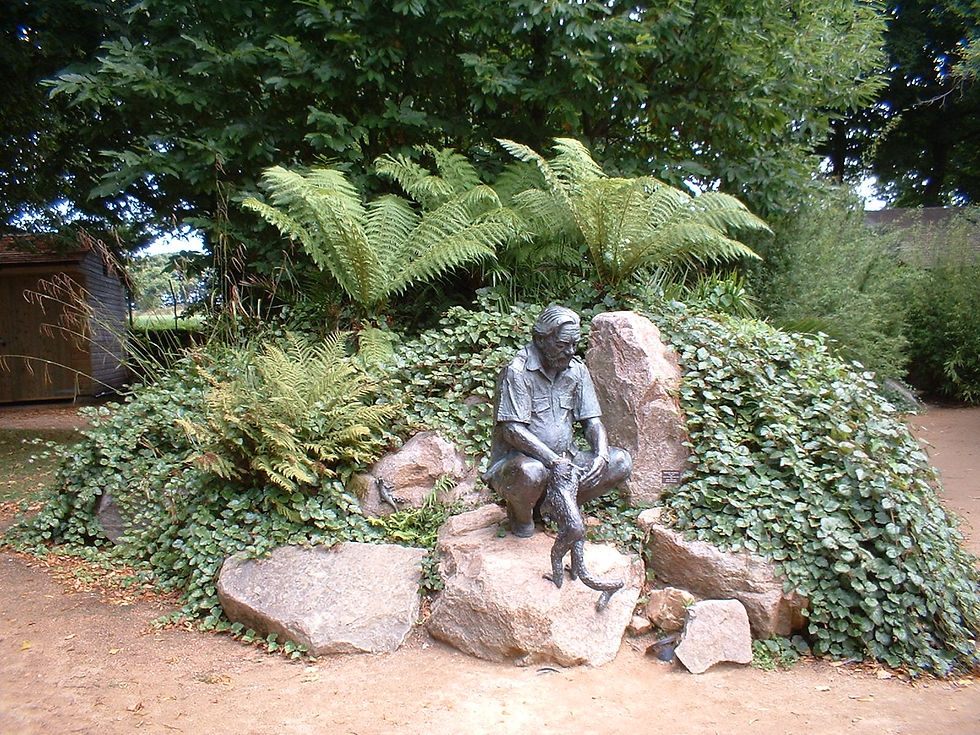Gerald Durrell, The Story of a Naturalist
- Iruni Kalupahana

- Aug 30, 2024
- 2 min read
Iruni Kalupahana JadeTimes Staff
I. Kalupahana is a Jadetimes news reporter covering Europe Region.

Early Life and Inspiration
Gerald Durrell was born on January 7, 1925, in Jamshedpur, India, into the Durrell family, which would foster his interest in animals. Following the unexpected death of his father, the Durrells migrated to England and then finally settled on the island of Corfu, Greece, in 1935, in search of a more affordable life. While in Corfu, Gerald occupied himself learning various island wildlife under the mentorship of Theodore Stephanides, a Greek scientist. These were formative years that instilled in him a love for nature and thus laid the bedrock for his celebrated autobiographical trilogy, which starts with "My Family and Other Animals," an evocative narration of his childhood and steadily developing interest in conservation.
Establishing a Career in Animal Conservation
In England, in 1939, during World War II, Durrell had a number of jobs, including one at Whipsnade Zoo, an experience that gave him useful animal husbandry. When he came of age, with a small inheritance he undertook his first expedition to collect animals for zoos in Cameroon. Seeing the plight and poor conditions of the majority of animals in captivity, Durrell became critical of the traditional methods of 'zoos' and therefore was committed to creating a zoo with the intention of conservation and protection of all species in danger and education of the public, rather than just an exhibition of wildlife.

Founding the Jersey Zoo and Durrell Wildlife Conservation Trust
In 1959, he set up his zoo in the isle of Jersey, which later became the Jersey Wildlife Preservation Trust and today is known as the Durrell Wildlife Conservation Trust DWCT. At the time, his zoo was unique because his objective was not solely the exhibition of species but one of breeding and, when possible, reintroduction to the wild, such as the Mauritius pink pigeon and the Madagascan ploughshare tortoise. Durrell's vision went beyond his zoo: he worked on a global scale with local communities and organizations in the protection of wildlife, as an advocate for animal welfare, and helped in redefining the role of zoos in society from places of amusement to sources of education and preservation of species.
Legacy and Impact on Global Conservation
Gerald Durrell died in 1995, but his work is continued through the Durrell Wildlife Conservation Trust, one of the leading organizations in international conservation today. Though met with financial struggles over the years, his dedication has inspired a new generation of conservationists and animal lovers alike. Most of his books, especially "My Family and Other Animals," are still widely read today and carry his message about the importance of every species. Durrell lived a life that has indeed touched many and will continue doing so even in death, teaching the world the beauty of all creatures and fighting for their protection in an ever-changing environment.











































Comments